-
 Bitcoin
Bitcoin $79,031.7280
2.38% -
 Ethereum
Ethereum $1,571.1582
5.24% -
 Tether USDt
Tether USDt $0.9998
0.04% -
 XRP
XRP $1.8889
5.41% -
 BNB
BNB $557.9353
2.56% -
 USDC
USDC $1.0000
0.01% -
 Solana
Solana $109.0020
7.84% -
 Dogecoin
Dogecoin $0.1510
8.03% -
 TRON
TRON $0.2355
4.19% -
 Cardano
Cardano $0.5866
5.65% -
 UNUS SED LEO
UNUS SED LEO $8.9813
0.50% -
 Toncoin
Toncoin $3.1352
4.55% -
 Chainlink
Chainlink $11.5982
7.42% -
 Stellar
Stellar $0.2293
4.50% -
 Avalanche
Avalanche $16.9742
8.35% -
 Sui
Sui $2.0451
10.97% -
 Hedera
Hedera $0.1573
14.80% -
 Shiba Inu
Shiba Inu $0.0...01120
2.21% -
 MANTRA
MANTRA $6.2934
2.88% -
 Polkadot
Polkadot $3.5991
4.23% -
 Bitcoin Cash
Bitcoin Cash $280.1689
7.38% -
 Litecoin
Litecoin $72.0897
7.82% -
 Dai
Dai $1.0003
0.03% -
 Ethena USDe
Ethena USDe $0.9990
0.06% -
 Bitget Token
Bitget Token $4.0695
4.76% -
 Hyperliquid
Hyperliquid $11.9669
17.51% -
 Pi
Pi $0.5730
1.71% -
 Monero
Monero $204.0459
4.53% -
 Uniswap
Uniswap $5.1641
4.36% -
 OKB
OKB $52.0556
6.35%
Are the income from pledge mining affected by the decline in the currency price?
Pledge mining rewards remain constant in crypto units but decline in fiat value when currency prices drop, affecting stakers' income.
Apr 05, 2025 at 01:56 am
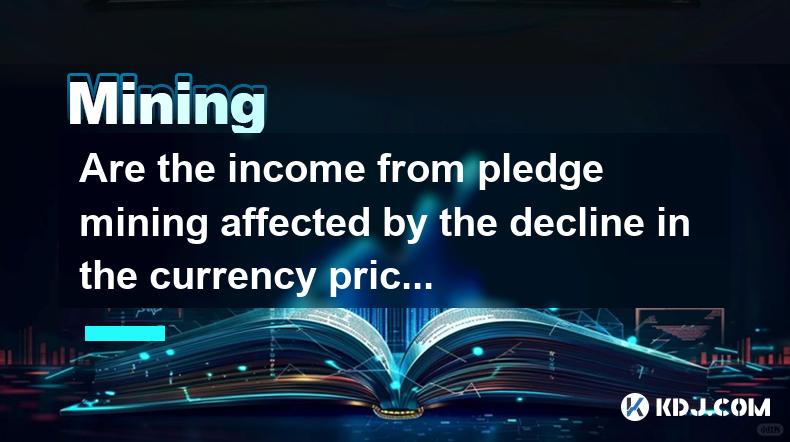
The relationship between the income from pledge mining and the decline in the currency price is a topic of significant interest within the cryptocurrency community. Pledge mining, also known as staking, is a process where participants lock up their cryptocurrency holdings to support the operations of a blockchain network, in return for rewards. The primary question that arises is whether the income generated from this activity is influenced by fluctuations in the currency's market value. To address this, we need to delve into the mechanics of pledge mining, the factors that determine staking rewards, and how these rewards are affected by price movements.
Understanding Pledge Mining
Pledge mining involves participants locking up a certain amount of cryptocurrency in a staking pool or directly on the blockchain. This action helps to secure the network and validate transactions. In return, participants receive staking rewards, which are typically distributed in the same cryptocurrency they have staked. The rewards are usually calculated based on the amount of cryptocurrency staked and the duration of the stake. However, the actual value of these rewards in fiat currency can be influenced by the market price of the cryptocurrency.
Factors Determining Staking Rewards
Several factors influence the amount of rewards a participant can earn from pledge mining. These include:
- The amount of cryptocurrency staked: Generally, the more cryptocurrency you stake, the higher the potential rewards.
- The duration of the stake: Longer staking periods often yield higher rewards.
- The total amount of cryptocurrency staked on the network: The more cryptocurrency staked overall, the lower the individual rewards might be due to dilution.
- The inflation rate of the cryptocurrency: Some cryptocurrencies have a fixed inflation rate, which can affect the total amount of rewards distributed.
These factors are intrinsic to the staking mechanism and are not directly influenced by the market price of the cryptocurrency. However, the market price plays a crucial role when converting these rewards into fiat currency.
Impact of Currency Price Decline on Staking Rewards
When the price of a cryptocurrency declines, the value of the staking rewards in fiat currency also decreases. For example, if you earn 10 units of a cryptocurrency as a staking reward and the price of the cryptocurrency drops from $100 to $50 per unit, the value of your reward in fiat currency would decrease from $1,000 to $500. This means that while the number of cryptocurrency units you receive as a reward remains the same, the purchasing power of those rewards in fiat currency is reduced.
Long-Term vs. Short-Term Impact
The impact of a currency price decline on staking rewards can be viewed from both short-term and long-term perspectives. In the short term, a decline in the currency price directly affects the value of the rewards in fiat currency. However, in the long term, the situation can be more complex. If the cryptocurrency's price eventually recovers, the value of the rewards in fiat currency could also recover. Additionally, if the cryptocurrency's price decline leads to a higher staking yield (due to fewer participants staking), the number of cryptocurrency units earned as rewards might increase, potentially offsetting the impact of the price decline.
Strategies to Mitigate the Impact of Price Decline
Participants in pledge mining can employ several strategies to mitigate the impact of a currency price decline on their staking rewards:
- Diversification: Staking multiple cryptocurrencies can spread the risk associated with price fluctuations in any single cryptocurrency.
- Long-term staking: Committing to longer staking periods can sometimes yield higher rewards, which might help offset short-term price declines.
- Reinvesting rewards: Reinvesting staking rewards back into the staking pool can compound the rewards over time, potentially mitigating the impact of price declines.
- Hedging: Using financial instruments such as futures or options to hedge against price declines can protect the value of staking rewards in fiat currency.
Case Studies of Pledge Mining and Price Decline
To illustrate the impact of currency price decline on pledge mining, let's consider a few case studies:
- Ethereum (ETH): Ethereum introduced Ethereum 2.0, which includes staking. If the price of ETH declines, the value of the staking rewards in fiat currency decreases. However, the number of ETH earned as rewards remains the same, and the staking yield might increase if fewer people stake due to the price decline.
- Tezos (XTZ): Tezos has a well-established staking mechanism. A decline in the price of XTZ would reduce the value of staking rewards in fiat currency, but the staking yield could potentially increase if fewer participants stake.
- Cardano (ADA): Cardano's staking rewards are also affected by price movements. A decline in ADA's price would lower the value of rewards in fiat currency, but the long-term potential of the cryptocurrency could still make staking attractive.
Market Sentiment and Staking Behavior
Market sentiment plays a significant role in staking behavior. During periods of price decline, some participants might withdraw their stakes due to fear of further losses, which can lead to a decrease in the total amount of cryptocurrency staked on the network. This reduction in staking can increase the staking yield for those who remain, as the rewards are distributed among fewer participants. Conversely, if the market sentiment is positive, more participants might stake their cryptocurrency, potentially diluting the rewards.
Regulatory and Economic Factors
Regulatory and economic factors can also influence the impact of currency price decline on pledge mining. For instance, changes in cryptocurrency regulations can affect the market price and, consequently, the value of staking rewards. Economic factors such as inflation rates and interest rates can also play a role. If the fiat currency experiences high inflation, the real value of staking rewards in fiat terms might decrease even if the cryptocurrency's price remains stable.
Technical Aspects of Staking Platforms
The technical aspects of staking platforms can also affect the impact of currency price decline on staking rewards. Different platforms have different mechanisms for calculating and distributing rewards. Some platforms might offer more favorable conditions during periods of price decline, such as higher staking yields or additional incentives to keep participants engaged. Understanding these technical nuances can help participants make informed decisions about where and how to stake their cryptocurrency.
Future Outlook and Innovations
The future of pledge mining and its relationship with currency price movements is likely to be influenced by ongoing innovations in blockchain technology. New staking mechanisms, such as liquid staking, allow participants to stake their cryptocurrency while still maintaining liquidity, which can mitigate the impact of price declines. Additionally, the development of decentralized finance (DeFi) platforms that integrate staking with other financial services could provide new opportunities for participants to manage the risks associated with price fluctuations.
Common Questions and Answers
Q: Does the number of cryptocurrency units earned from staking change with the currency price?
A: No, the number of cryptocurrency units earned from staking remains the same regardless of the currency price. However, the value of those units in fiat currency can change based on the market price.
Q: Can staking rewards increase if the currency price declines?
A: Yes, if fewer participants stake their cryptocurrency due to a price decline, the staking yield might increase because the rewards are distributed among fewer participants.
Q: How can I protect the value of my staking rewards during a price decline?
A: You can protect the value of your staking rewards by diversifying your staking across multiple cryptocurrencies, committing to longer staking periods, reinvesting your rewards, and using financial instruments to hedge against price declines.
Q: Are there any cryptocurrencies that are less affected by price declines in terms of staking rewards?
A: While all cryptocurrencies are affected by price declines in terms of the fiat value of staking rewards, some cryptocurrencies might offer higher staking yields or additional incentives during periods of price decline, which can mitigate the impact.
Q: How does market sentiment affect staking behavior during a price decline?
A: During a price decline, negative market sentiment might lead to fewer participants staking their cryptocurrency, which can increase the staking yield for those who remain. Positive market sentiment can lead to more participants staking, potentially diluting the rewards.
Disclaimer:info@kdj.com
The information provided is not trading advice. kdj.com does not assume any responsibility for any investments made based on the information provided in this article. Cryptocurrencies are highly volatile and it is highly recommended that you invest with caution after thorough research!
If you believe that the content used on this website infringes your copyright, please contact us immediately (info@kdj.com) and we will delete it promptly.
- Recovery of Altcoins Follows Bitcoin, Increasing the Total Crypto Market Cap
- 2025-04-08 18:25:12
- Promises of a V-Shaped Recovery Are Intensifying as Speculation Mounts That the Fed Will Pivot to QE
- 2025-04-08 18:25:12
- An apparent multi-million dollar trade gone wrong on the Hyperliquid derivatives exchange saw a JELLYJELLY memecoin trader lose millions
- 2025-04-08 18:20:12
- LF Labs (LF) Captures Investor Attention as It Moves Decisively in the Web3 Market
- 2025-04-08 18:20:12
- As 2024 Winds Down, Dogecoin, Sui, and BlockDAG Promise a Thrilling Start to 2025
- 2025-04-08 18:15:12
- Coldware (COLD) Emerges as a Contender to Dogecoin (DOGE) and Shiba Inu (SHIB)
- 2025-04-08 18:15:12
Related knowledge
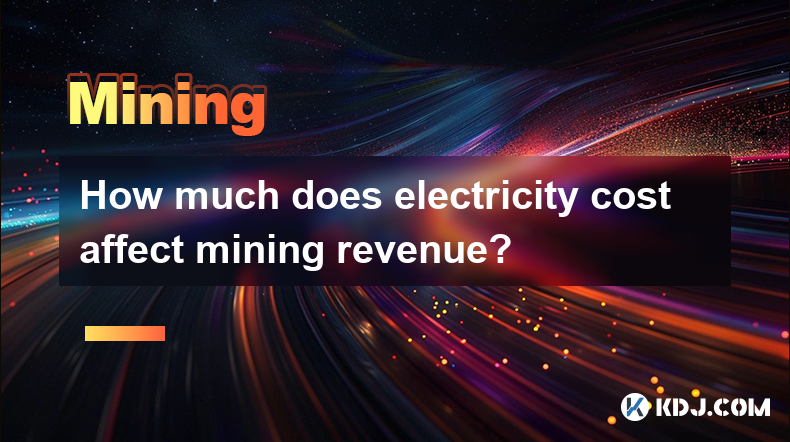
How much does electricity cost affect mining revenue?
Apr 08,2025 at 05:29pm
The cost of electricity plays a crucial role in determining the profitability of cryptocurrency mining. Mining revenue is directly impacted by the expenses incurred in running mining equipment, with electricity costs often being the most significant operational expense. Understanding how electricity costs affect mining revenue is essential for miners lo...

Why does mining require a full node?
Apr 08,2025 at 06:49pm
Mining in the cryptocurrency world is a complex process that involves verifying transactions and adding them to the blockchain. One of the key components required for mining is a full node. But why is a full node necessary for mining? Let's delve into the reasons and explore the intricacies of this requirement. What is a Full Node?A full node is a progr...
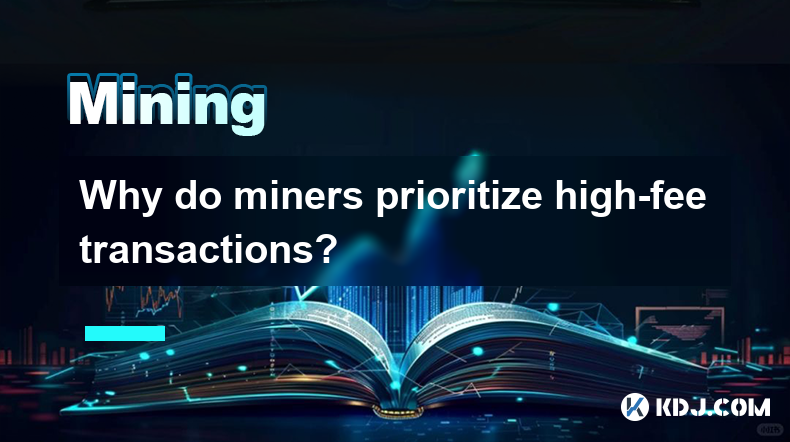
Why do miners prioritize high-fee transactions?
Apr 08,2025 at 05:01pm
Miners in the cryptocurrency ecosystem, particularly in networks like Bitcoin, play a crucial role in validating and adding transactions to the blockchain. One of the key factors that influence their decision-making process is the transaction fee associated with each transaction. Miners prioritize high-fee transactions primarily because these fees direc...
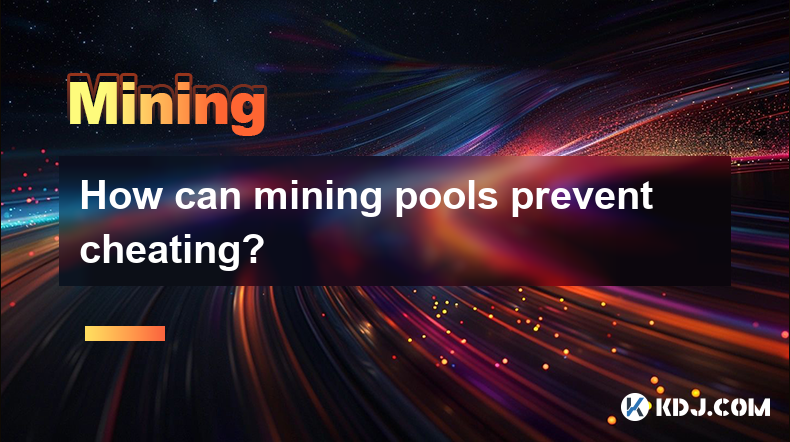
How can mining pools prevent cheating?
Apr 08,2025 at 01:00pm
Mining pools are essential components of the cryptocurrency ecosystem, enabling individual miners to combine their computational resources to increase their chances of successfully mining a block and earning rewards. However, the collaborative nature of mining pools also introduces the risk of cheating, where some participants might attempt to manipulat...
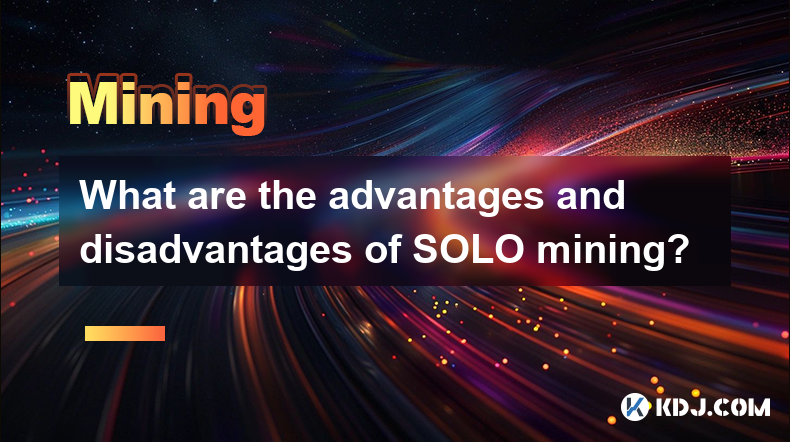
What are the advantages and disadvantages of SOLO mining?
Apr 08,2025 at 01:36pm
Solo mining, also known as solo mining, is a method of cryptocurrency mining where an individual miner operates independently without joining a mining pool. This approach has its unique set of advantages and disadvantages, which are crucial for miners to understand before deciding to embark on this path. In this article, we will delve into the various a...
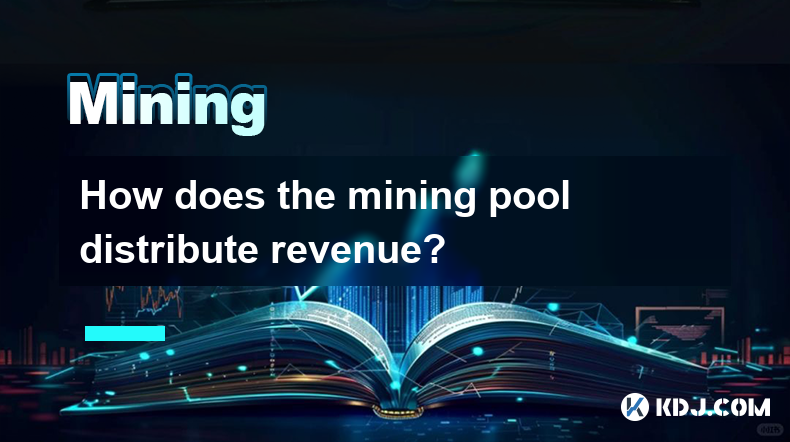
How does the mining pool distribute revenue?
Apr 08,2025 at 04:36pm
Mining pools play a crucial role in the cryptocurrency ecosystem by allowing individual miners to combine their computational resources to increase their chances of successfully mining a block and earning rewards. The distribution of revenue within a mining pool is a critical aspect that affects the profitability and fairness for its participants. This ...

How much does electricity cost affect mining revenue?
Apr 08,2025 at 05:29pm
The cost of electricity plays a crucial role in determining the profitability of cryptocurrency mining. Mining revenue is directly impacted by the expenses incurred in running mining equipment, with electricity costs often being the most significant operational expense. Understanding how electricity costs affect mining revenue is essential for miners lo...

Why does mining require a full node?
Apr 08,2025 at 06:49pm
Mining in the cryptocurrency world is a complex process that involves verifying transactions and adding them to the blockchain. One of the key components required for mining is a full node. But why is a full node necessary for mining? Let's delve into the reasons and explore the intricacies of this requirement. What is a Full Node?A full node is a progr...

Why do miners prioritize high-fee transactions?
Apr 08,2025 at 05:01pm
Miners in the cryptocurrency ecosystem, particularly in networks like Bitcoin, play a crucial role in validating and adding transactions to the blockchain. One of the key factors that influence their decision-making process is the transaction fee associated with each transaction. Miners prioritize high-fee transactions primarily because these fees direc...

How can mining pools prevent cheating?
Apr 08,2025 at 01:00pm
Mining pools are essential components of the cryptocurrency ecosystem, enabling individual miners to combine their computational resources to increase their chances of successfully mining a block and earning rewards. However, the collaborative nature of mining pools also introduces the risk of cheating, where some participants might attempt to manipulat...

What are the advantages and disadvantages of SOLO mining?
Apr 08,2025 at 01:36pm
Solo mining, also known as solo mining, is a method of cryptocurrency mining where an individual miner operates independently without joining a mining pool. This approach has its unique set of advantages and disadvantages, which are crucial for miners to understand before deciding to embark on this path. In this article, we will delve into the various a...

How does the mining pool distribute revenue?
Apr 08,2025 at 04:36pm
Mining pools play a crucial role in the cryptocurrency ecosystem by allowing individual miners to combine their computational resources to increase their chances of successfully mining a block and earning rewards. The distribution of revenue within a mining pool is a critical aspect that affects the profitability and fairness for its participants. This ...
See all articles






















































































